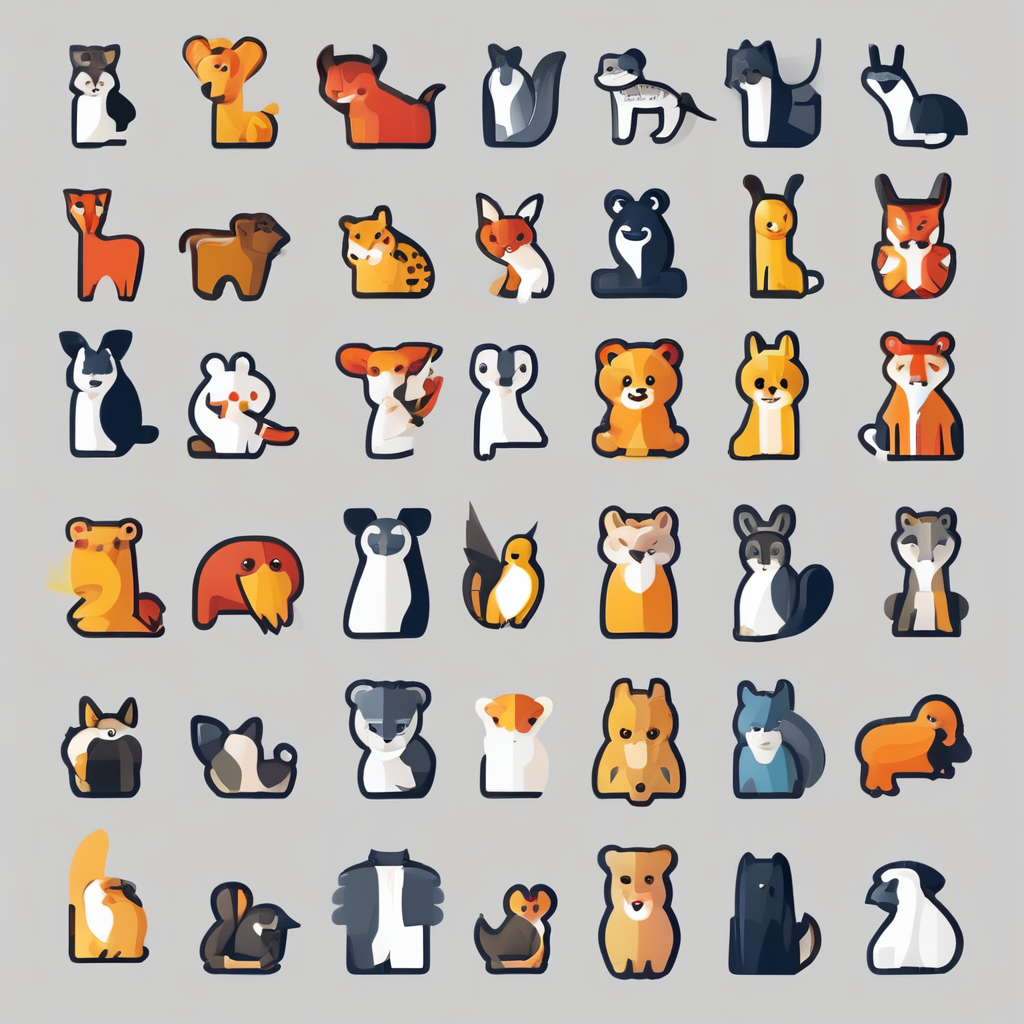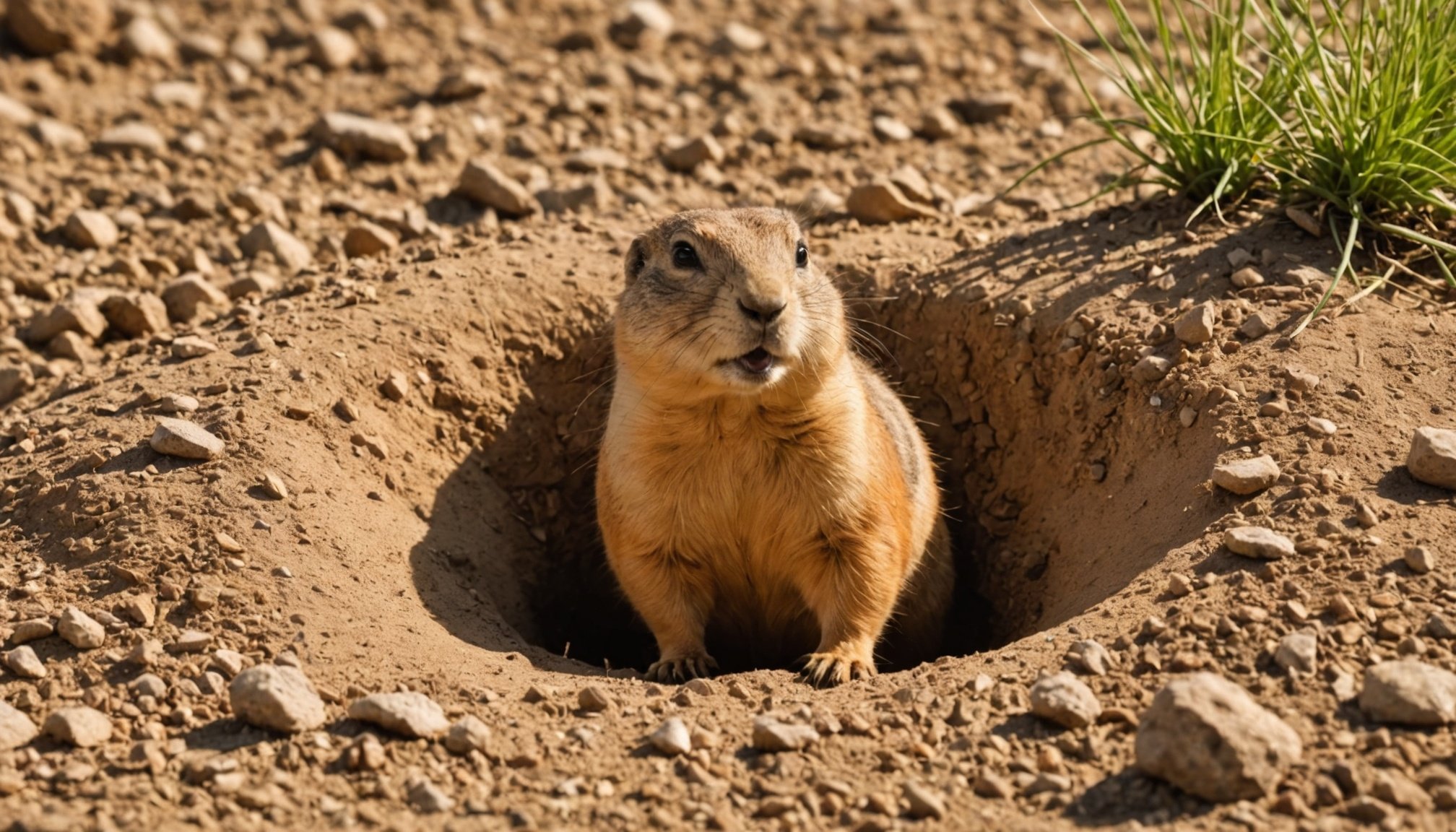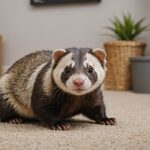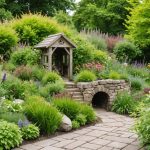Creating the Ideal Prairie Dog Habitat
Designing a suitable habitat for prairie dogs requires an understanding of their natural behavior and needs. Given their social nature, space becomes a crucial aspect of habitat design. Prairie dogs thrive in environments where they can express their natural tendencies. This includes activities like digging and interacting socially. Therefore, accommodating ample space is necessary to allow them to exhibit such behaviors.
The enclosure layout needs to prioritize pet care by including different levels and hiding areas, which mimic their native surroundings. These features encourage active lifestyles and contribute to their overall happiness and well-being. When designing the enclosure, one must consider both horizontal and vertical space to enable exploration and simulate their natural habitat.
This might interest you : Ultimate handbook for successfully raising orphaned british robins: proven techniques for care and nurturement
Incorporating natural elements like soil and rocks into the enclosure design further enhances the habitat design. This provides sensory enrichment and reflects their natural home environment. Attention to detail is essential in creating an environment that supports their behavioral needs, which plays a significant role in preventing stress and promoting health. Combining thoughtful design with adequate space ensures a thriving environment suited to prairie dogs’ pet care requirements.
Burrowing Basics: Celebrating Natural Instincts
Burrowing is a fundamental natural instinct of prairie dogs, pivotal for their daily lives. These intricate tunnel systems not only offer shelter and protection but also play a crucial role in their physical and mental well-being. The act of burrowing itself provides exercise, helping to maintain a healthy physique. Additionally, it fosters mental stimulation, serving as an outlet for their innate behaviours.
Topic to read : Designing a safe and stimulating living space for your ferret in a uk flat
Designing appropriate burrows and tunnels in their habitat is vital for animal enrichment. Emulating their natural burrowing environment, these enclosures should feature varying tunnel depths and entrances. This allows prairie dogs to explore, hide, and express their natural instincts, reducing stress and promoting curiosity.
For effective enrichment, ensure burrows are safe and constructed from non-toxic materials. Add diverse textures and elements that resemble their natural surroundings, like soil layers or soft bedding materials. By prioritising these design principles, you support the species’ intrinsic behaviours and contribute to a more fulfilling and enriched life.
Ultimately, understanding and catering to their burrowing behavior can greatly enhance the quality of life for these social creatures, keeping them engaged and happy in their enclosed environment.
Essential Strategies for Enclosure Design
When designing enclosures for prairie dogs, it’s essential to ensure both safety and comfort to accommodate their natural behaviours. Understanding the importance of correct materials and layout can significantly enhance their living environment.
Materials for Building Enclosures
Selecting appropriate, non-toxic materials is vital for safety. Options such as untreated wood and natural fibres are recommended. Avoid toxic plastics and ensure all materials are durable enough to withstand the prairie dogs’ digging tendencies.
Recommended Sizes and Layouts
Providing ample space is crucial for prairie dogs’ physical and mental health. A general guideline is to design enclosures that allow at least 4-5 square feet per animal, ensuring enough room for movement and social interactions. Multi-level designs can enhance exploration, simulating their natural habitat.
Security Features for Safety
Enclosure security is paramount. Features like covered tops prevent escape and deter predators. Ensure that all entry points are secure, with no gaps larger than 1 inch. Additionally, reinforce the edges with sturdy materials to withstand digging.
These strategies are foundational in creating a safe and enriching environment, allowing prairie dogs to thrive while maintaining their natural behaviours within enclosed spaces.
Habitat Enrichment Techniques
Creating an engaging environment is paramount for fulfilling prairie dog activities and their natural instincts. Enclosure enrichment can be achieved through diverse strategies that stimulate and captivate these creatures.
Incorporating Toys and Hiding Spots
To promote environmental enrichment, introduce toys that encourage play and exploration. Items like tunnels, balls, or chewable toys can keep prairie dogs occupied. Hiding spots, mimicking natural burrows, offer refuge and add intrigue to their surroundings.
Creating Varied Textures and Surfaces
Including varied surfaces within the enclosure is essential for stimulating surroundings. Mix soft bedding materials with rough textures such as untreated wood or soil to replicate their native habitat. This diversity enriches sensory experiences and encourages natural behaviours.
The Role of Vegetation in Enrichment
Introducing vegetation furthers habitat enrichment by offering both nourishment and stimulation. Edible plants like grasses or herbs provide not only a food source but also an opportunity to instinctually forage. Ensure that any plants added are non-toxic to prevent health issues.
Incorporating these techniques keeps prairie dogs’ environments lively and engaging, supporting their holistic well-being through enriched prairie dog activities.
Maintaining a Healthy Prairie Dog Environment
Maintaining a prairie dog environment involves vigilant attention to both health care and habitat cleanliness. A clean and hygienic living space is fundamental to promoting good health.
Essential Hygiene Practices
Regular cleaning is key to ensuring a sanitary environment. This includes weekly sanitization of enclosures and toys to prevent the buildup of harmful bacteria. Use mild, non-toxic cleaning agents to ensure the safety of your prairie dogs.
Managing Waste and Substrate
Effective waste management is a cornerstone of habitat maintenance. Choose absorbent and natural substrates to line the enclosure, which helps manage waste and reduces the risk of odours. Regularly change and monitor these materials to keep conditions optimal.
Regular Health Checks and Monitoring
Ensuring prairie dogs’ health care extends beyond physical cleanliness. Routine health checks and monitoring are crucial. Watch for signs such as lethargy, changes in appetite, or unusual behaviours, which could indicate health concerns. If such signs are noted, seek veterinary advice promptly. Maintaining cleanliness and health practices ensures a thriving environment for these social creatures.
Understanding Prairie Dog Behavior
Prairie dogs live in complex social structures within colonies, which have a dramatic influence on their behaviour. These intriguing dynamics involve cooperation and communication, critical for their survival. They express a variety of behaviours based on their habitat, with burrowing and foraging being central to their lifestyle. Typically, a social structure comprises family groups known as coteries, engaging in grooming, playing, and even social calls.
Animal behavior in prairie dogs also relies heavily on vocal communication. Their distinct calls serve multiple purposes, including alerts for predators, signals during mating, and maintaining social bonds. When interpreting prairie dog communication, researchers have noted their “bark” possesses unique variations to convey different messages, indicative of their sophisticated auditory skills.
Communicative displays not only safeguard the colony but also deepen the social bonding between members. Understanding these behaviours is essential for designing ideal habitats, as it requires facilitating an environment that supports interaction and communication. This comprehension allows us to replicate conditions where prairie dogs feel secure, resulting in a more harmonious existence within their man-made environments. These insights contribute significantly to their care and ultimately enhance their overall well-being.
Visual Aids and Resources
Visual aids serve as invaluable tools for creating and understanding the ideal habitat design for prairie dogs. These resources provide clarity and guidance, especially when designing environments that cater to prairie dog needs and effective pet care.
Illustrations and Diagrams
Integrating illustrations and diagrams can vividly outline the layout of a suitable prairie dog habitat. They assist in visualizing key components, such as space allocation and essential features, which promote a thriving environment. These visual guides can help highlight the significance of strategic space and enclosure design, crucial for fulfilling prairie dog needs.
Enrichment Ideas
Visual representations of enrichment techniques ensure clarity in executing diverse strategies. Illustrations can depict how to incorporate toys, varied surfaces, and vegetation into an enclosure, enhancing environmental enrichment. Such resources are particularly beneficial for showcasing practical ways to stimulate prairie dog activities.
Further Educational Material
To deepen understanding, access to additional educational material can be advantageous. Books, articles, or online platforms that delve into prairie dog behaviors and preferences provide a more comprehensive insight. These materials can guide how to meet prairie dog needs, ensuring their enclosures support their well-being and natural instincts effectively.









